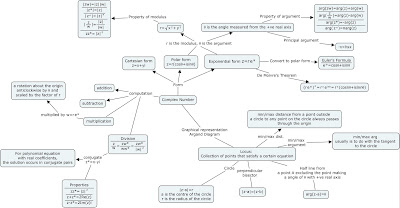
Tuesday, June 22, 2010
Friday, June 11, 2010
Wednesday, May 19, 2010
Lecture 4: Normal distribution
In today's lecture, we learnt two approximations.
1. Binomial distribution to normal distribution
If X~B(n, p)
- Recall that if when n is large, and np is smaller than 5, we can approximate X to Poisson distribution with mean np, i.e. X~Po(np)
- If n is large, np is larger than 5 and n(1-p) is also larger than 5, we can approximate X to Normal distribution with mean np and variance np(1-p), i.e. X~N(np, np(1-p)
If \[X \sim Po(\lambda)\], and \[\lambda>5\],
we can approximate X to normal distribution, \[X \sim N(\lambda,\lambda)\]
Remark: Remember to do the continuity correction when you approximate either Binomial or Poisson distribution to Normal distribution.
You can attempt tutorial 15B now.
Tuesday, May 18, 2010
Lecture 3: Normal distribution
In today's lecture, we learnt three important properties of Normal distribution.
1. Sum of two independent normal random variables
2. Sum of n independent observations from the same Normal distribution
3. Multiple of Normal variables.
Remember the following rules:
- All the random variables must be independent.
- When two random variables are added or subtracted, their variance are always added.
- When a random variable is multiplied by a constant, say, a, the variance is multiplied by a^2.
- You can only add or multiply the variance, NOT the standard deviation.
Thursday, May 13, 2010
Lecture 2: Normal distribution
In this lecture, you have learnt the following points:
1. the use of " invNorm"
Example: X~ N(17,11), P(X is smaller than a ) =0. 38, use invNorm (0.38, 17, sqrt(11)) to find the value of a.
Note: If the given information is P(X is bigger than a)=0.38, you have change it to P(X is smaller than a)=1-0.38=0.62 before you use the "invNorm" function.
2. Properties of Normal distribution
If \[X\sim N(\mu ,\sigma ^{2}) \], \[aX+b \sim N(a\mu+b, a^{2}\sigma^{2})\]
3. Standard Normal distribution
- Standard Normal distribution is the normal distribution with mean 0 and variance 1.
- We can change any normal distribution to standard normal distribution. \[X\sim N(\mu ,\sigma ^{2}) \], \[\frac{X-\mu}{\sigma}\sim N(0,1)\]
Subscribe to:
Comments (Atom)


